Bing Crosby: selected recordings, 1927-1934
___________________________
Songbook’s principle Bing Crosby pages:
- The Rhythm Boys
- The Rhythm Boys gallery
- Bing Crosby slide show and galleries 1926-1950s
- Bing Crosby 1927-34 (this page)
- Bing Crosby and the Andrews Sisters: selected hit recordings 1943-1951
 Excerpts from the Bing Crosby biography by John Bush at AllMusic.com
Excerpts from the Bing Crosby biography by John Bush at AllMusic.com
Bing Crosby was, without doubt, the most popular and influential media star of the first half of the 20th century. The undisputed best-selling artist until well into the rock era (with over half a billion records in circulation), the most popular radio star of all time, and the biggest box-office draw of the 1940s, Crosby dominated the entertainment world from the Depression until the mid-1950s and proved just as influential as he was popular. Unlike the many vocal artists before him, Crosby grew up with radio, and his intimate bedside manner was a style perfectly suited to emphasize the strengths of a medium transmitted directly into the home. He was also helped by the emerging microphone technology: scientists had perfected the electrically amplified recording process scant months before Crosby debuted on record, and in contrast to earlier vocalists, who were forced to strain their voices into the upper register to make an impression on mechanically recorded tracks, Crosby’s warm, manly baritone crooned contentedly without a thought of excess.
Bing Crosby was born Harry Lillis Crosby in Tacoma, WA, on May 3, 1903. (Bingo was a childhood nickname from one of his favorite comic strips.) The fourth of seven children in a poverty-level family who loved to sing, he was briefly sent to vocal lessons early on by his mother, until he grew tired of the training. An early admirer of Al Jolson, Crosby saw his hero perform in 1917. Crosby sang in a high-school jazz band, and when he began attending nearby Gonzaga College (he had grown up practically in the middle of the campus), he ordered a drum set through the mail and practiced on the set. Introduced to a local bandleader named Al Rinker, he was invited to join Rinker’s group, the Musicaladers, singing and playing drums with the group throughout college.
 Though the Musicaladers broke up soon after his graduation in 1925, Bing Crosby was ready to stick with the music business. Crosby had made quite a bit of money during the band’s career, and he and Rinker — who was the brother of Mildred Bailey — were confident they could make it in California. They packed up their belongings and headed out for Los Angeles, finding good money working in vaudeville until they were hired by Paul Whiteman, leader of the most popular jazz band in the country (and known as the “King of Jazz” in an era when black pioneers were mostly ignored since they were unmarketable). For a few songs during Whiteman’s shows, Rinker and Crosby sang as the Rhythm Boys with Harry Barris (a pianist, arranger, vocal effects artist, and songwriter later renowned for “I Surrender Dear” and “Wrap Your Troubles in Dreams”). With their clever songwriting and stage routines, the trio soon became one of the Paul Whiteman Orchestra’s most popular attractions, and Crosby took a vocal on one of Whiteman’s biggest hits of 1927-1928, “Ol’ Man River.” Besides appearing on record with Whiteman’s orchestra, the Rhythm Boys also recorded on their own… read more
Though the Musicaladers broke up soon after his graduation in 1925, Bing Crosby was ready to stick with the music business. Crosby had made quite a bit of money during the band’s career, and he and Rinker — who was the brother of Mildred Bailey — were confident they could make it in California. They packed up their belongings and headed out for Los Angeles, finding good money working in vaudeville until they were hired by Paul Whiteman, leader of the most popular jazz band in the country (and known as the “King of Jazz” in an era when black pioneers were mostly ignored since they were unmarketable). For a few songs during Whiteman’s shows, Rinker and Crosby sang as the Rhythm Boys with Harry Barris (a pianist, arranger, vocal effects artist, and songwriter later renowned for “I Surrender Dear” and “Wrap Your Troubles in Dreams”). With their clever songwriting and stage routines, the trio soon became one of the Paul Whiteman Orchestra’s most popular attractions, and Crosby took a vocal on one of Whiteman’s biggest hits of 1927-1928, “Ol’ Man River.” Besides appearing on record with Whiteman’s orchestra, the Rhythm Boys also recorded on their own… read more
_____________________
 It is difficult to determine on which songs that Crosby recorded with Paul Whiteman he was the lone vocalist. An index of Crosby’s pre-1931 solo vocals would help.* In most cases the only way I’ve been able to differentiate between tracks featuring the Rhythm Boys and those with Bing Crosby solo vocals is to listen to each of them, when available. I’ve only begun the task, making it through the 1927 recordings and most of those of 1928. I will post those Whiteman recordings of 1927-28 which I have found to have vocals by Crosby alone.
It is difficult to determine on which songs that Crosby recorded with Paul Whiteman he was the lone vocalist. An index of Crosby’s pre-1931 solo vocals would help.* In most cases the only way I’ve been able to differentiate between tracks featuring the Rhythm Boys and those with Bing Crosby solo vocals is to listen to each of them, when available. I’ve only begun the task, making it through the 1927 recordings and most of those of 1928. I will post those Whiteman recordings of 1927-28 which I have found to have vocals by Crosby alone.
In 1929 Crosby recorded Let’s Do It (Cole Porter) with the Dorsey Brothers. That recording will be included here; but the remainder of the recordings with Whiteman from 1929 and 1930 will be excluded until I have time to differentiate those on which Crosby sang solo (if any) from those with the Rhythm Boys.
The Rhythm Boys left Paul Whiteman shortly after the premiere of the film King of Jazz. Wikipedia:
In May 1930, after three and a half years with Paul Whiteman, The Rhythm Boys left and took up residency at the Ambassador Hotel’s Cocoanut Grove night club performing there with Gus Arnheim‘s Orchestra. Many of these nightly performances were broadcast live from the club along the Pacific coast. They recorded one song, Them There Eyes, with Arnheim’s Orchestra for Victor Records in November 1930 before disbanding.[1]
The Rhythm Boys recorded only the one song with Arnheim; but Crosby recorded several with the Orchestra in 1930-31. I’ll include some, perhaps all, of these which will take us into Crosby’s phenomenally successful run of hit songs beginning with 1931’s I Surrender Dear. I have selected songs from the period 1931-1934 with a preference for standards and others which were reportedly the most popular of his many hits for the respective year. Although all “chart positions” reported for years prior to 1940, the year Billboard began publishing its Music Popularity Chart**, might be questionable, one has to take notice of the fact that Wikipedia lists 67 top-twenty recordings by Crosby for this four year period, including 20 in 1931 and 21 in 1933.
______________________
With Paul Whiteman and his Orchestra
I’ve excluded from this Bing Crosby feature those songs recorded with Whiteman as a member of the vocal group The Rhythm Boys. See my feature page on the trio, here: The Rhythm Boys.
(above) The Rhythm Boys: Bing Crosby, Harry Barris, and Al Rinker
1927
Muddy Water (Jo Trent, Peter De Rose, Harry Richman) – A radio broadcast recording from c. 1950, G.I. Jive program. Disc jockey G.I. Jill believes the record was made in 1929 or ’30. She notes that Bix Beiderbecke and Frank Trumbauer were members of the band; and warns, “Remember, it’s twenty years old, so…it’s a little beat.”
.
1928
 Two songs from the musical Show Boat which opened at the Ziegfeld Theatre in New York on 27 December 1927 with Norma Terris as “Magnolia”, Howard Marsh as “Gaylord” and Helen Morgan as “Julie.” It ran for 572 performances.
Two songs from the musical Show Boat which opened at the Ziegfeld Theatre in New York on 27 December 1927 with Norma Terris as “Magnolia”, Howard Marsh as “Gaylord” and Helen Morgan as “Julie.” It ran for 572 performances.
Ol’ Man River (Jerome Kern, Oscar Hammerstein II) – Paul Whiteman (dir), Henry Busse, Charles Margulis (tp); Bix Beiderbecke (c); Boyce Cullen, Wilbur Hall, Bill Rank, Jack Fulton (tb); Frank Trumbauer, Chester Hazlett, Harold McLean, Jimmy Dorsey, Charles Strickfaden (reeds); Kurt Dieterle, Mischa Russell, Matty Malneck, Mario Perry, John Bouman (vln); Harry Perrella (p); Steve Brown (sb) ; Mike Trafficante (tu); Mike Pingitore (bj); Hal McDonald (dm); Bing Crosby (voc) : New York, 11 January 1928
.
Make Believe (Jerome Kern, Oscar Hammerstein II) – recorded 27 January 1928
.
1929
Let’s Do It (Let’s Fall in Love) – (Cole Porter) – The Dorsey Brothers with vocal by Bing Crosby – recorded 26 January 1929 in NY, NY according to redhotjazz.com
.
1930
When the Folks High-Up Do That Mean Low-Down (Irving Berlin) – sung by Bing Crosby, Bebe Daniels, June MacCloy and chorus in the movie Reaching For the Moon (1930). It was one of the earliest film appearances by Crosby. He performed several numbers in King of Jazz with the Rhythm Boys that year as well. The Rhythm Boys also appear in one other 1930 film, Check and Double Check, to sing one song(Three Little Words).
______________________
_________________________________
With Gus Arnheim & his Orchestra

The list of Crosby singles at Wikipedia includes the following recordings by Gus Arnheim with Bing as the vocalist:
- 1930: “It Must Be True”
- 1931: “The Little Things In Life” ,”I Surrender Dear”,”One More Time”
- On a fifth recording, “Ho Hum!,” he shared vocals with Loyce Whiteman.
1930
It Must Be True (Barris, Arnheim, Clifford) – according to wikipedia, this is the first track which Crosby recorded with Gus Arnheim.
.
1931
I Surrender Dear (Harry Barris, Gordon Clifford)
_______________________________
______________________
More 1931 recordings:
Just One More Chance (Arthur Johnston, Sam Coslow) / I Surrender Dear – I don’t know which film this clip is from. IMDb credits I Surrender Dear, sung by Crosby, in the 1931 film of that title, but not Just One More Chance. It’s clearly not from The Road to Hollywood as claimed by the youtube provider. That was a much later film.
.
Out of Nowhere
.
A clip from the film I Surrender Dear (1931)
.
Wrap Your Troubles in Dreams (Harry Barris, Ted Koehler, Billy Moll) – sung by Crosby to a group of Indians in the film One More Chance (1931)
.
I Found a Million Dollar Baby (in a Five and Ten Cent Store) – (m. Harry Warren, w. Mort Dixon, Billy Rose)
.
Star Dust (Hoagy Carmichael, Mitchell Parish)
.
1932
Dinah (m. Harry Akst, w. Sam M. Lewis, Joe Young) – with the Mills Brothers
.
Dinah and Please (Leo Robin, Ralph Rainger) – from the film The Big Broadcast (1932). Playing guitar in Please is Eddie Lang.
.
Here Lies Love (m. Ralph Rainger, w. Leo Robin) – another song from The Big Broadcast (1932) – Bing and the Vincent Lopez Orchestra
.
Paradise (Nacio Herb Brown, Gordon Clifford)
.
Sweet Georgia Brown (Ben Bernie, Maceo Pinkard, w. Kenneth Casey) – with Isham Jones’ Orchestra; includes a chorus of scat by der Bingle
.
Some of These Days (w. m. Shelton Brooks)
.
Brother, Can You Spare a Dime? (Jay Gorney, E. Y. Harburg)
____________________________
Pages: 1 2


















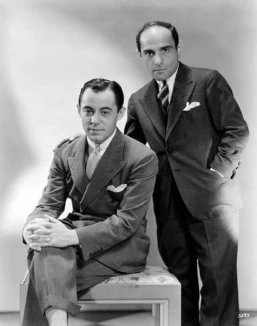

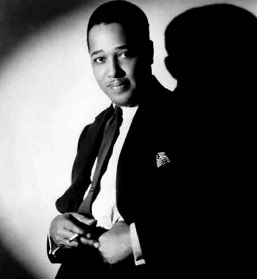


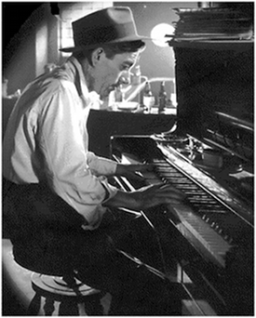
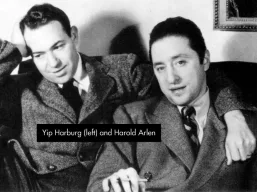




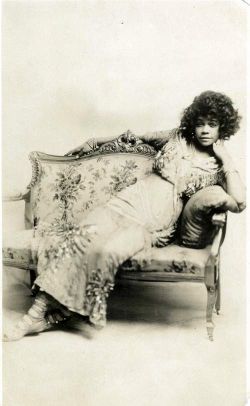










May 15, 2010 @ 10:07:43
I am constantly looking for recordings of the songs Bing made before his voice changed after the operation. I had the great fortune to meet him, of all places, on top of St Peters in Rome in 1960 when I was there with other fencing masters to support the British team!
Many thanks for your efforts.
LikeLike
May 15, 2010 @ 10:23:08
Hi John, Thanks for your note. St. Peters in Rome 1960. I’ll bet that seems like a fortnight ago if you’re like me. Let me know if there is anything, any song or recording, you’d like especially to hear. This Bing feature was thrown together pretty hastily. I’ve got to work on it. – Cheers, Jim
LikeLike
Jun 15, 2010 @ 00:21:52
What wonderful tribute to the greatest singer of the 20th century.
In addition his acting and magnetic personality, makes Bing a talent not likely to ever be seen again.
LikeLike
Jun 15, 2010 @ 01:47:53
Hi Nelkane, Yes, Bing was one of a kind. And he remains a great treasure. I’m glad that you enjoyed the tribute. One of these days I’ll try to get to work on part 2. – Cheers, Jim
LikeLike
Jun 20, 2010 @ 20:08:09
I hope you are able to continue this historic tribute ,because Bing must never be forgotten.
Bing’s contribution to movies and music is without peer.
LikeLike
Sep 15, 2011 @ 16:15:34
Is there a way to get a higher resolution version of that 1920s autograph at the beginning? That picture just made my day…
LikeLike
Sep 15, 2011 @ 17:58:11
Hi Allison. I don’t know. That’s a photo I’ve had for a couple of years, found in a Google search, but I don’t recall where it came from. It’s undated, was undated where I found it, but certainly looks like a very early pic. I removed or reduced tint. The image as I found it is reproduced below.
The same image is available at Photobucket, here: Bing Crosby early
pic.
Presently, I don’t have the time to do an extensive search of image galleries, but I’ll give you some of the galleries I might use when the time comes to construct a Crosby gallery (I’ve been putting the job off).
Photobucket has 424 results for a search of “Bing Crosby.” They aren’t all relevant, but most seem to be photos of der Bingle. That total is surprisingly low (to me) considering that there are presently over 4500 results for “Judy Garland” at Photobucket.
Others: All Star Pics has 156 images.
FanPix.net has 191. Happy hunting.
Yours truly, doc
LikeLike